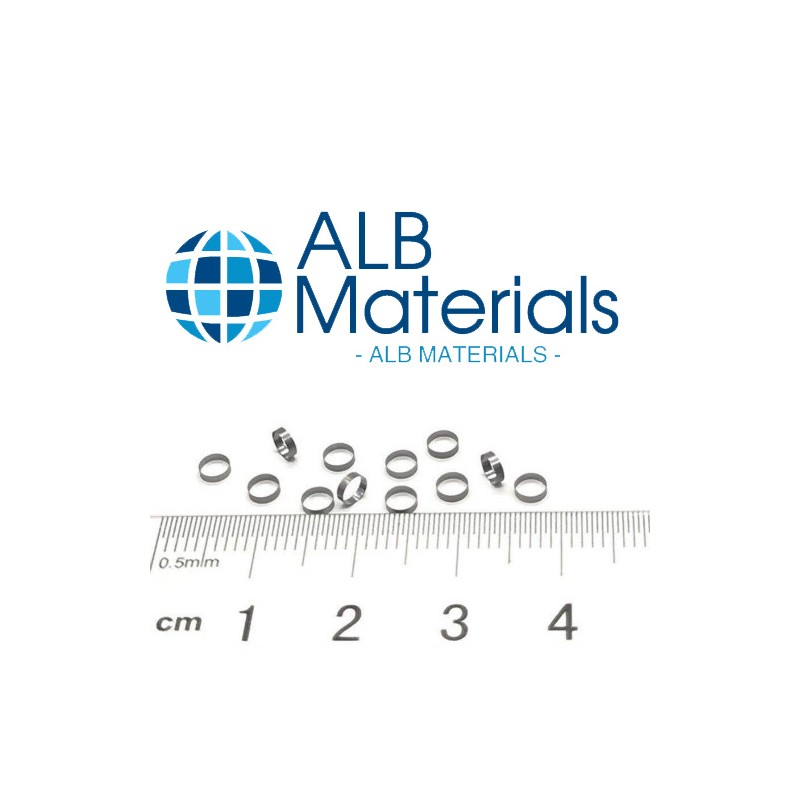Medical rings, also known as marker bands, are fundamental components in the realm of medical devices. These small but crucial parts are typically made from metals like gold, platinum, or their alloys, offering radiopaque qualities that make them visible under X-ray imaging. This visibility is vital during numerous minimally invasive surgical procedures, such as angioplasty, where precise placement is critical. The importance of medical rings spans various medical fields, from cardiovascular interventions to orthopedic and neurological applications, enhancing both the safety and efficacy of treatments.
Medical Rings in Surgeries
In surgical procedures, medical rings play a pivotal role in guiding and positioning medical devices. Their ability to be clearly seen on imaging equipment ensures that surgical tools are accurately deployed, which is essential for successful outcomes. For example, in cardiovascular surgeries, marker bands help in the precise placement of stents and catheters, directly affecting procedural success and patient safety.
Several case studies have demonstrated that the use of medical rings significantly improves surgical outcomes. In one notable instance, the application of marker bands in vascular surgery allowed for exceptionally precise placements of grafts, resulting in reduced recovery times and lower incidences of complications.
Materials and Radiopacity
The materials used for medical rings are selected based on their radiopaque properties. Metals like platinum and gold are preferred for their excellent visibility under X-ray. These materials ensure that the medical rings provide reliable performance during critical surgical procedures.
In-depth Look at Angioplasty
In the context of angioplasty, medical rings are indispensable for the precise placement of stents within blocked coronary arteries. Their visibility under imaging techniques ensures that stents are accurately expanded at the blockage site, optimizing blood flow restoration and minimizing the risk of restenosis.
Impact on Recovery
The strategic use of medical rings in angioplasty significantly influences patient recovery and long-term health outcomes. By ensuring the stents are correctly positioned, the chances of complications are minimized, leading to better recovery rates and enhanced quality of life post-procedure.
Enhancing Patient Rehabilitation
Medical rings also find their application extending into the realm of patient rehabilitation. Postoperative recovery benefits greatly from the accurate placement of devices facilitated by marker bands.
Role in Physiotherapy
In physiotherapy and rehabilitation, medical rings assist in monitoring the movement and positioning of implants during therapy sessions. This monitoring helps in adjusting therapeutic approaches for better outcomes.
Numerous patient stories highlight the effectiveness of medical rings in speeding recovery. One patient reported significantly improved mobility after a knee replacement surgery where medical rings were used to ensure the precise alignment of the implant.
Integration with Orthopedic Devices
In orthopedic devices, such as joint replacements and bone fracture treatments, medical rings enhance the functionality and longevity of implants. They are crucial in surgeries where minute adjustments make significant differences in patient outcomes.
Advances in Monitoring
Technological advances now allow for medical rings to be integrated with sensors to monitor healing processes, offering real-time data that can be used to customize patient care plans.
The Diagnostic Value of Medical Rings
Beyond their surgical applications, medical rings hold substantial diagnostic value. They are increasingly used in non-invasive procedures to enhance the detection and treatment planning of various diseases.
Role in Disease Detection
Medical rings assist in the precise mapping of internal organs and structures during diagnostic procedures, improving the accuracy of disease detection and assessment.
For instance, in cancer treatment planning, medical rings can help delineate tumor margins more clearly during radiation therapy, ensuring targeted treatment and sparing healthy tissues.
Technological Evolution in Diagnostics
The future of diagnostic technology looks promising with the integration of medical rings. Innovations are continually emerging, with new materials and designs that enhance their functionality and application in medical diagnostics.
Statistical Improvements
Recent studies show significant improvements in diagnostic accuracy and treatment efficacy when medical rings are utilized, highlighting their growing importance in medical technology.
Medical rings, or marker bands, are not just components; they are pivotal elements that enhance the precision and effectiveness of modern medical technology. From surgical procedures to postoperative rehabilitation and diagnostics, their applications are vast and critical. The ongoing advancements in their design and material science only promise to further their significance, making them indispensable in the pursuit of innovative medical treatments and improved patient outcomes.

